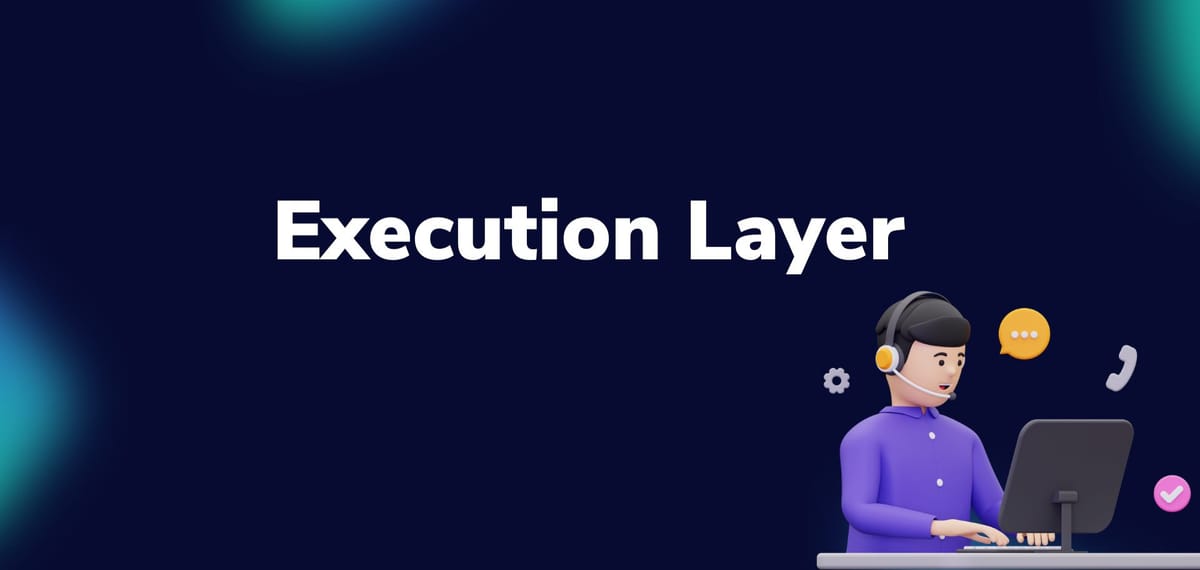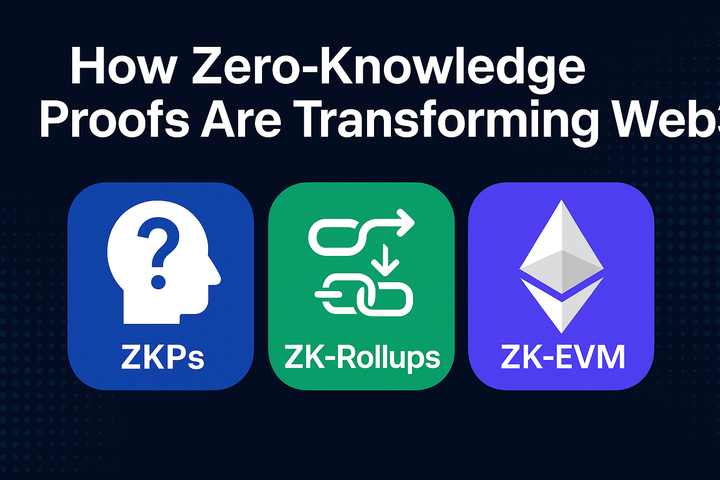The Execution Layer in Web3: Powering the Decentralized Future

In Blockchain and Web3, the execution layer plays a critical role,but it's also one of the most strained. As the demand for smart contracts and decentralized applications (dApps) grows, the need for a more efficient and scalable execution layer becomes urgent.
This article breaks down what the execution layer does, why it's facing challenges, and the innovative efforts underway to overcome these challenges explaining even the most technical concepts along the way.
What is the Execution Layer?
The execution layer is the part of a blockchain that processes transactions and executes smart contracts. Think of it as the "engine" under the hood, it takes commands (transactions), processes them, updates the system (state), and ensures everything runs according to the rules.
Key responsibilities:
- Validating and executing transactions
- Running smart contracts (e.g., on the Ethereum Virtual Machine or EVM)
- Managing account balances and contract data
- Calculating and distributing gas fees
- Maintaining state consistency across nodes
In Ethereum's post-Merge architecture, the execution layer is separate from the consensus layer, which is responsible for validating blocks and achieving agreement across the network using Proof-of-Stake.
Why Is the Execution Layer a Bottleneck?
Despite its importance, the execution layer has several inefficiencies:
1. Limited Throughput
Most execution layers (like Ethereum's) process transactions sequentially—one after the other. This caps transaction speed at around 15–20 transactions per second (TPS) on Layer 1.
2. High Gas Fees
During peak activity, gas prices spike, making it expensive for users to interact with dApps or transfer tokens.
3. Storage Bloat
Every node must store the entire blockchain state, which grows over time. This increases the cost and complexity of running a node.
4. Redundant Computation
All nodes independently re-run every transaction to verify it, causing massive duplicated work.
5. No Native Parallelism
Smart contracts can’t easily run side-by-side (in parallel) due to potential conflicts in data access. This limits scalability.
6. Security Challenges
Smart contracts are executed as-is, without safety checks. This has led to costly exploits like the DAO hack or reentrancy bugs.
Solutions: Tackling the Execution Layer’s Inefficiencies
To solve these problems, developers and researchers are pushing forward multiple innovations. Here’s how the blockchain ecosystem is upgrading the execution layer.
1. Layer 2 Scaling (Rollups)
Rollups process transactions off-chain, then post compressed data or proofs back to the main chain. This drastically reduces costs and increases throughput.
Types:
- Optimistic Rollups (e.g., Arbitrum, Optimism): Assume transactions are valid unless someone challenges them with a fraud proof.
- ZK-Rollups (e.g., zkSync, Starknet): Use cryptographic zero-knowledge proofs to validate transactions with mathematical certainty.
Benefits:
- 10x–100x throughput
- Cheaper gas fees
- Smart contract compatibility
2. EIP Upgrades (Ethereum)
Ethereum is undergoing protocol upgrades to improve its execution efficiency.
a. EIP-1559
- Introduced a base fee model for gas.
- Makes gas prices more predictable and user-friendly.
b. EIP-4844 (Proto-Danksharding)
- Adds blob-carrying transactions, reducing Layer 2 data costs.
- Paves the way for full Danksharding—Ethereum’s long-term scaling vision.
3. Danksharding (Coming Soon)
Danksharding splits data processing across multiple "shards", each handling different parts of the workload.
Why it matters:
Massively increases throughput and lowers costs while keeping Ethereum secure and decentralized.
4. Stateless Clients
Currently, nodes must store all blockchain data. Stateless clients change this by verifying transactions using witness data (temporary proofs), not full storage.
Impact:
- Lower resource requirements
- More node participation (even on low-powered devices)
5. Verkle Trees
An upgrade to Ethereum’s data structure, replacing Merkle-Patricia Tries.
Benefits:
- Smaller, faster proofs
- Better suited for stateless clients
- More efficient data verification
6. Parallel Execution
Some newer blockchains (e.g., Aptos, Sui) are designed to process smart contracts in parallel using techniques like Move VM and transaction dependency analysis.
Ethereum is exploring how to safely implement parallelism within the EVM.
7. zkEVMs and Alternative VMs
New virtual machines are emerging to enhance execution:
- zkEVM: Zero-knowledge-compatible Ethereum Virtual Machine for fast and secure proofs.
- Move VM (Aptos/Sui): Designed for parallelism and safety.
- FuelVM: Modular execution environment optimized for rollups.
8. Modular Blockchain Design
Instead of one blockchain doing everything, modular blockchains split responsibilities:
- Execution: Handled by rollups or sidechains.
- Data availability: Handled by chains like Celestia or Avail.
- Consensus: Managed by separate layers (like Ethereum Beacon Chain).
Result: Better scalability, flexibility, and innovation.
9. Smart Contract Security Tools
New auditing and verification tools help reduce vulnerabilities:
- Formal verification: Mathematically prove that contracts do what they're supposed to.
- Automated auditors: Tools like MythX, Slither, and Certora catch bugs early.
Final Thoughts
The execution layer is the beating heart of Web3, but it’s long overdue for upgrades. Thanks to innovations like rollups, stateless clients, parallel execution, and modular blockchains, we’re finally entering an era where decentralized systems can scale to billions of users, securely and affordably.
As these technologies mature, the execution layer will no longer be the bottleneck, it’ll be the backbone of a truly global Web3 future.



Comments ()